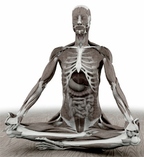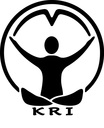Level I Curriculum
There are six principle components you will be working with:
- Kriya & Meditation: The Foundation of Kundalini Yoga as taught by Yogi Bhajan®
- Humanology and Philosophy: The Concepts and Lifestyle of a Kundalini Yoga Teacher
- Anatomy & Physiology: The Basics of Yogic and Western Anatomy
- The Consciousness of a Teacher: Building a personal connection with the Golden Chain of Teachers
- The Master’s Touch: Cultivating a Connetion to the Master, Yogi Bhajan
- The Practicum: Teaching on Day One
Kriya & Meditation
The Foundation of Kundalini Yoga as taught by Yogi Bhajan®
Learn the theory and practice of Kundalini Yoga Kriyas & Meditations
- Kriya: Understand the nature of kriya—the completed action—and its application to Kundalini Yoga, your life cycles, and more
- Asana: Divine Alignment and the Science of Angles and Triangles as applied to Kundalini Yoga Postures
- Pranayam: The Science and Technology of Breath using Breath Retention and the Body’s Bandhas, Breath of Fire, One Minute Breath, Sitali Pranayam and more
- Drishti: Dharana, or Concentration, and the Benefits of Eye Focus. The Third Eye, Lotus Point, Moon Center and more
- Mudra: Experience the Qualities of the Different Hand Positions. Gyan, Buddhi, Shuni, and Ravi Mudras as well as Venus Lock and their Relationship to Mastering the Elements
- Naad: The Power of Sound and Mantra to Raise the Kundalini and Serve the Consciousness in the Aquarian Age
- Meditation: Experience Dozens of Meditations to Incorporate into Your Daily Kundalini Yoga Practice
Humanology and Philosophy
The Concepts and Lifestyle of a Kundalini Yoga Teacher
Understand the history and tradition of Kundalini Yoga, as well as the underlying philosophy and concepts that make up the yogic tradition

-
The Good Life:
Don’t drink,
don’t smoke,
what do you do?
The disciplined
life of a
Teacher.
-
Sadhana: The
foundation of
our lifestyle.
Experience the
practice of yoga
and meditation
before the sun
rises.
-
Shakti and
Bhakti:
Empowering your
practice and
surrendering
through service.
-
Good Eats: How
to live as a
vegetarian—and
love it!
-
The Sun and Moon
Teachings: What
does it mean to
be a woman or man in
the Aquarian
Age?
-
Yogic Philosophy
and the Aquarian
Age: Applying
Ancient Wisdom
in Contemporary
Times
Anatomy and Physiology
The Basics of Yogic and Western Anatomy
Explore the purpose and function of the body’s systems and how they support the practice of Kundalini Yoga and the Lifestyle of a Yogi

-
Digestive
System:
What’s
the
definition
of Good
Digestion?
What are
the
components
of Good
Digestion?
What’s
the role
of good
digestion
in your
health
and the
health
of your
students?
-
Respiratory
System:
How do
the
various
pranayams
affect
the
chemical
make-up
of the
blood?
What’s
the
effect
of
respiration
on the
nervous
system
and vice
versa?
-
Nervous
System:
How does
Kundalini
Yoga
strengthen
the
autonomic,
motor
and
sympathetic
nervous
systems?
What is
the role
of
Meditation
on the
mind,
the
endocrine
system
and the
nerves?
-
Endocrine
System:
What’s
the role
of the
glands
in
maintaining
good
health?
How does
the
chakra
system
inform
and
strengthen
the
glandular
system?
What
kriyas
and
meditations
support
the
glands?
What’s
the
endocrine
system’s
role in
immunity?
-
Musculoskeletal
System:
Learn
how the
muscles,
bones,
ligaments
and
others
supporting
tissues
work
together
to keep
us
upright
and
moving
through
the
world.
Develop
the
right
cues so
that you
can help
your
students
find
their
best
possible
pose.
-
The
10
Bodies:
What
are they
and how
do they
inform
your
yoga
practice
and
teaching?
-
Nadis,
Vayus,
and
Chakras:
The
basics
of Yogic
Anatomy
and how
they
work
through
with the
breath,
the
movement
of
energy
and the
awakening
of the
Self.
-
Integration:
How do
the
Western
and
Yogic
anatomy
systems
work
together
to
support
our
understanding
of
health
and the
body’s
functions?
Consciousness and Values of a Teacher
Learn the roles and responsibilities as well as the skills and techniques of an effective instructor of Kundalini Yoga as taught by Yogi Bhajan®

-
Practical
Techniques
for
Teaching
Beginners
-
Ethical
Guidelines
for
Teachers
- Curriculum Development: Workshops, Series, and Applied EnvironmentsThe Transformational Role of the Teacher
- The Consciousness of a Teacher
The Master’s Touch · Cultivating a Connection to the Master Yogi Bhajan
Develop an awareness of your connection to the Master, cultivate a relationship to the Golden Chain of Teachers, and serve the legacy of the teachings
- Video classes with Yogi Bhajan, Master of Kundalini Yoga
- Connecting to the Golden Chain: Experience the Master’s Touch
- Legacy and Lineage of Kundalini Yoga
The Practicum · Teaching from Day One
Well—almost day one! Develop an appreciation and understanding of yoga from a teacher’s perspective and experience teaching—with focus groups for feedback and encouragement—throughout the course.
- Practice teaching Kundalini Yoga Kriyas and Meditation under the guidance of Senior Teachers and Trainers in Training
- Teach in small groups under the supervision of a KRI Yoga Teacher Trainer
- Receive written feedback from Practicum
